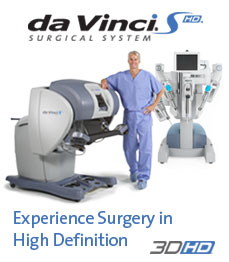Pushback begins against robotic surgery


The rising popularity of robotic surgery, along with the fast-rising profits and stock price of robot maker Intuitive Surgical, is finally starting to draw some pushback.
Gina Kolata, author of that great book on the 1918 flu, is back at her desk, questioning whether robotic surgery, usually done with the Intuitive DaVinci system, is really any better than what's done with a person and a scalpel.
Her conclusion is that patients believe it's true, but you can't prove it. The only relevant study, from 2007, was done on Medicare patients, and was inconclusive.
Kolata's real argument is a cost-based one. DaVinci systems cost nearly $1.4 million, and it can take hundreds of operations for a surgeon to become proficient with one. Since the technology is new the training is done on the job.
And unlike the situation with John Henry, robots aren't more productive. It can take twice as long to perform some surgeries with the robot than with a scalpel.
I strongly suspect Intuitive can face down Kolata's inquisition. As more surgeons become trained to use DaVinci systems, I suspect their advantages will become ever-more obvious.
But there are some important questions to be answered:
- What types of procedures maximize the DaVinci advantage?
- How long does it take a surgeon to gain maximum proficiency using DaVinci?
- When is the added expense justified for insurance reimbursement? For government reimbursement?
This last is the kind of cost-benefit analysis we have to start doing if we are ever to reduce health care costs. If you're paying cash and you just feel more confident with a robot surgeon, have a good time.
But with my money?
To this question we also need to add a standard of proof, and a time for proof to become necessary. Should robot surgeons, like drugs, be made to prove their value in research settings before being allowed into the public payment stream, or can that be done after?
When an advance like this is new, and robotic surgery is just a decade old, hard data can be hard to come by. A requirement for proof of efficacy, in every operation, before deploying robotic surgeons could delay their introduction, maybe even threaten the company. And I'm certain such questions are being asked in Europe.
Intuitive's own marketing materials note that DaVinci sells much better in the U.S. than elsewhere, even while arguing its use leads to less blood loss, fewer complications, and the ability to do more complex surgeries. Examples in the brochure from Europe are from academic hospitals.
The most powerful argument offered for DaVinci remains patient preference, the Attracting Patients section starting at page eight. DaVinci enhances a hospital's reputation, leading to greater revenues. A cancer patient who gets their surgery done with a DaVinci uses the same hospital before-and-after the procedure. That means money.
The brochure illustrates both the promise and the pitfalls of American medicine. It focuses on increased revenue, increased profit, and lower malpractice risks using robotic surgery. These are not compelling where cost-effectiveness rules.
The Intuitive Surgical success story could not have been possible outside the U.S. That's a great thing. It may also be a big problem.